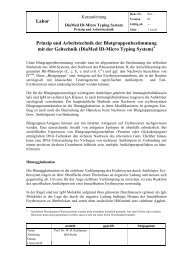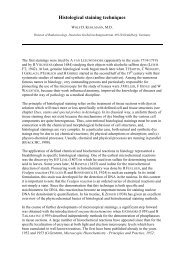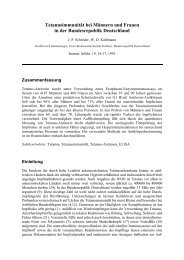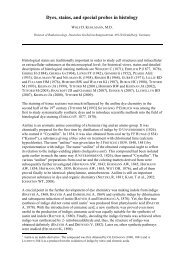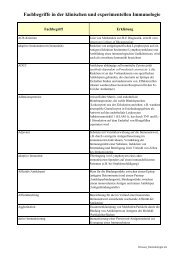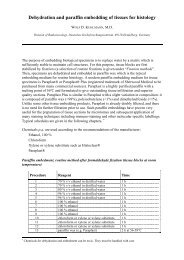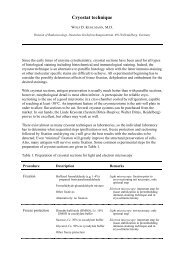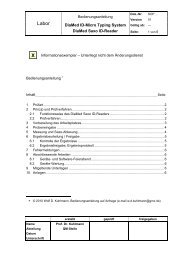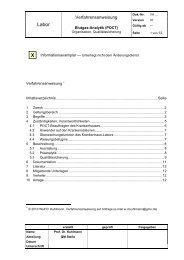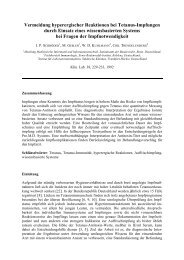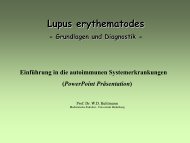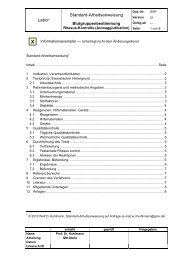You also want an ePaper? Increase the reach of your titles
YUMPU automatically turns print PDFs into web optimized ePapers that Google loves.
Distilled waterright pH is adjusted with 5% acetic acid)• Acetate wash buffer:10.0 mL 0.2 M acetate buffer plus90.0 mL distilled waterpH is adjusted with 5% acetic acid• 0.01% acetic acidStaining procedureSections are passed through distilled water and stained:− GIEMSA diluted dye solution 1-2 hours− acetate wash buffer 3 dips−blot dry and control with the microscope; if “blue” predominates, differentiate in acetic acid− differentiate in 0.01% acetic acid optionalunder microscopic control ∗− acetate wash buffer 2-3 dips−blot dry− n-butanol 2 x 3 minSlides are cleared in xylene or xylene substitute and mounted in resinous medium undercoverglass∗Fixation influences the color balance of <strong>Giemsa</strong> <strong>staining</strong>, and best results are obtainedwith appropriate pH of the <strong>staining</strong> solution. Adequate pH is determined by trial with<strong>Giemsa</strong> <strong>staining</strong> solutions prepared with acetate buffers in the range from pH 3.5-7.0. If“blue” predominates, then the pH is too high, and if “red” predominates, a higher pHmust be chosenReferences for further readingsEhrlich P (1879)Nocht B (1898)<strong>Romanowsky</strong> D (1891)Unna P (1891)Pappenheim A (1899)Ewing J (1900)<strong>Giemsa</strong> G (1902)Wright J (1902)<strong>Giemsa</strong> G (1903)<strong>Giemsa</strong> G (1904)Wilson TM (1907)Pappenheim A (1908)Lillie R (1944)Marshall PN et al. (1975)Lillie RD and Fullmer HM (1976)Marshall PN et al. (1978)Wittekind DH (1983)Schulte E (1987)



